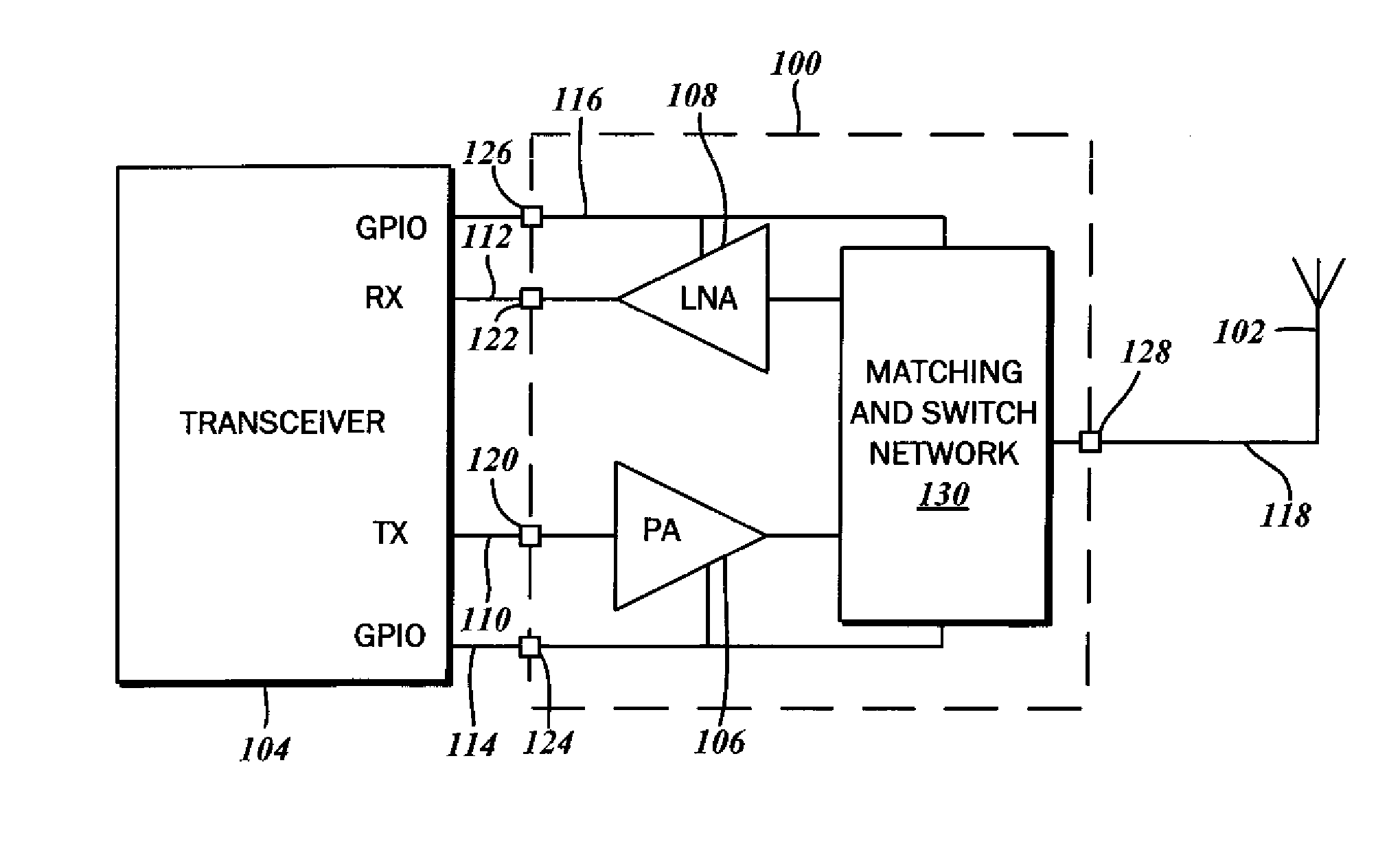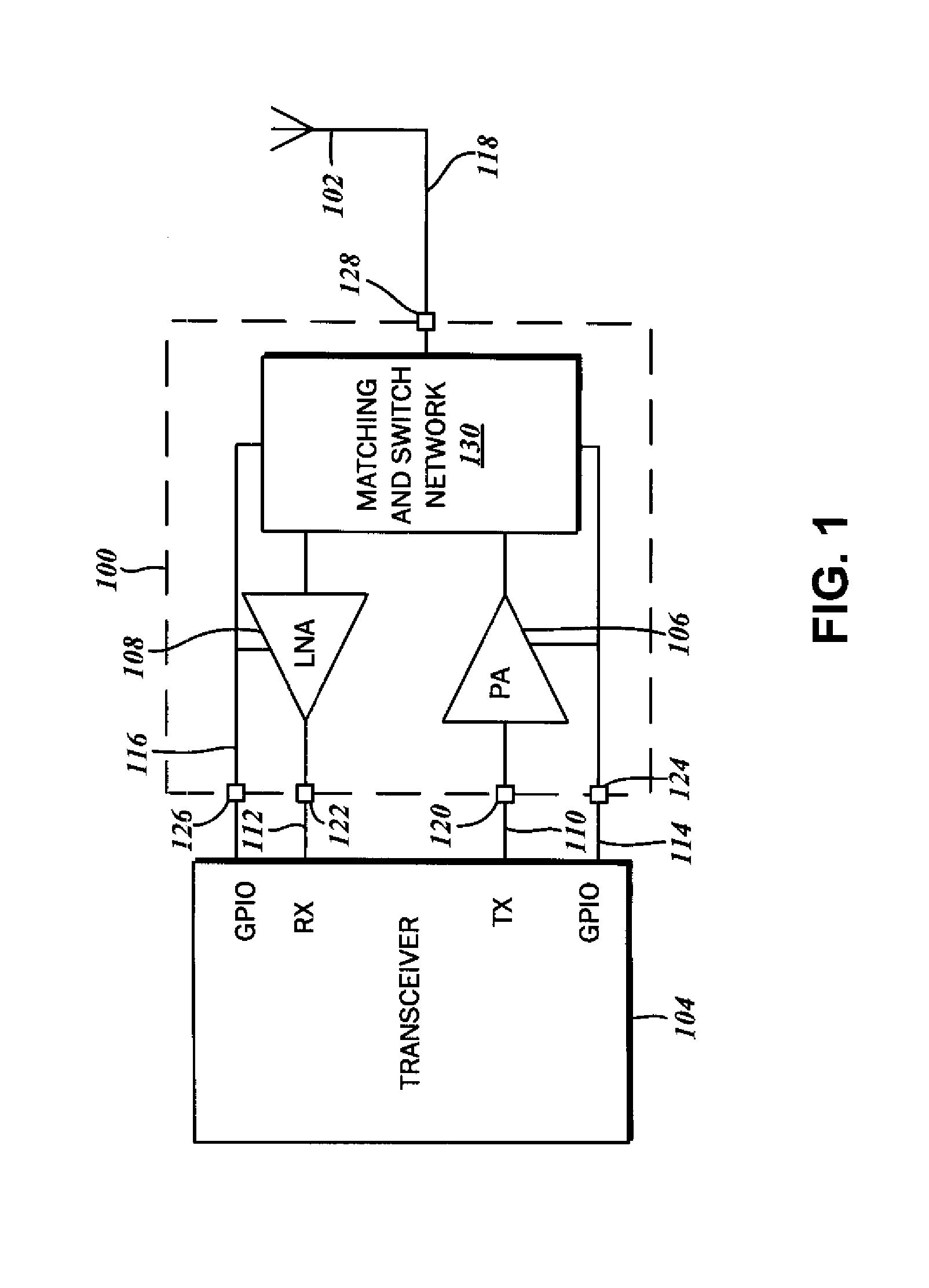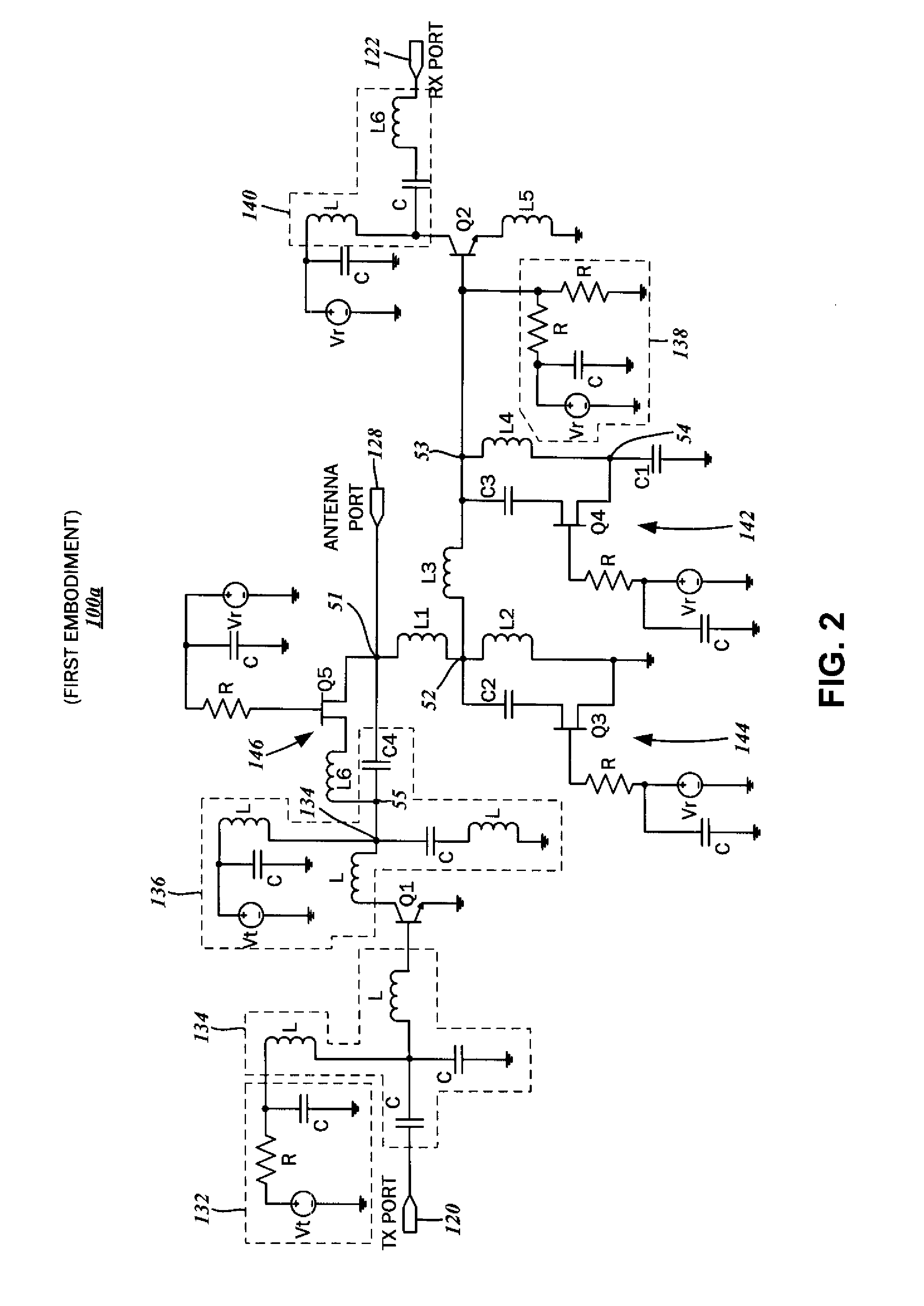Increased receive sensitivity radio frequency front end integrated circuits
a front-end integrated circuit and receive-sensitive technology, applied in the direction of transmission, electrical equipment, etc., can solve the problems of increasing the transformation coefficient from the antenna to the low-noise amplifier input, the receive chain of the front-end circuit tends to exhibit increased noise figures, and the conventional wireless communication transceiver typically does not generate sufficient power or have the sensitivity necessary for reliable communication, etc., to achieve low noise, reduce the effect of resistance and high transistor impedan
- Summary
- Abstract
- Description
- Claims
- Application Information
AI Technical Summary
Benefits of technology
Problems solved by technology
Method used
Image
Examples
first embodiment
[0045]The circuit diagram of FIG. 2 illustrates the front end circuit 100a, including the transmit port 120, the receive port 122, and the antenna port 128. The transistor Q1 generally corresponds to the power amplifier 106, and is in a common-emitter configuration with a single amplification stage. The transistor Q2 generally corresponds to the low noise amplifier 108, and is also in a common-emitter configuration with a single amplification stage. It is understood that multi-stage amplifiers may be utilized for higher gain applications, and those having ordinary skill in the art will recognize the appropriate modifications to the basic configuration presented herein for such multi-stage amplifiers. In some embodiments, it is contemplated that the various transistors of the front end circuit 100, including transistors Q1 and Q2, have a bipolar junction structure. In other embodiments, the transistors may have a field-effect structure (MOSFET, MESFET, etc.) While the present disclos...
second embodiment
[0067]the front end circuit 100b contemplates the matching and switch network 130 including the first resonant circuit 142 with the corresponding RF switching transistor Q4, and the second resonant circuit 144 with the corresponding RF switching transistor Q3. Again, although a field effect transistor is utilized, any other type of transistor may be substituted. The second resonant circuit 144 is connected to the inductor L1 at the second node 52.
[0068]The transistor Q1, which corresponds to the power amplifier 106, is activated in the transmit mode. However, the transistor Q2, which corresponds to the low noise amplifier 108, is deactivated. Additionally, the RF switching transistors Q3 and Q4 are deactivated. Thus, the low noise amplifier 108 and the RF switching transistors Q3 and Q4 are selectively activated in a substantially exclusive relation to the power amplifier 106. In the deactivated state, it is understood that the transistors Q3 and Q4 have a substantially high impedan...
third embodiment
[0080]the front end circuit 100c contemplates the matching and switch network 130 including the first resonant circuit 142 with the corresponding RF switching transistor Q4, the second resonant circuit 144 with the corresponding RF switching transistor Q3, and the third resonant circuit 146 with the corresponding RF switching transistor Q5. Again, although a field effect transistor is utilized, any other type of transistor may be substituted. The second resonant circuit 144 is connected to the inductor L1 at the second node 52, while the third resonant circuit 146 is connected to the second node 52 and the third node 53 that is connected to the first resonant circuit 142 and the base of the low noise amplifier transistor Q2.
[0081]The transistor Q1, which corresponds to the power amplifier 106, and the RF switching transistor Q5 are activated in the transmit mode. Concurrently, the transistor Q2, which corresponds to the low noise amplifier 108, is deactivated. The RF switching trans...
PUM
 Login to View More
Login to View More Abstract
Description
Claims
Application Information
 Login to View More
Login to View More - R&D
- Intellectual Property
- Life Sciences
- Materials
- Tech Scout
- Unparalleled Data Quality
- Higher Quality Content
- 60% Fewer Hallucinations
Browse by: Latest US Patents, China's latest patents, Technical Efficacy Thesaurus, Application Domain, Technology Topic, Popular Technical Reports.
© 2025 PatSnap. All rights reserved.Legal|Privacy policy|Modern Slavery Act Transparency Statement|Sitemap|About US| Contact US: help@patsnap.com



